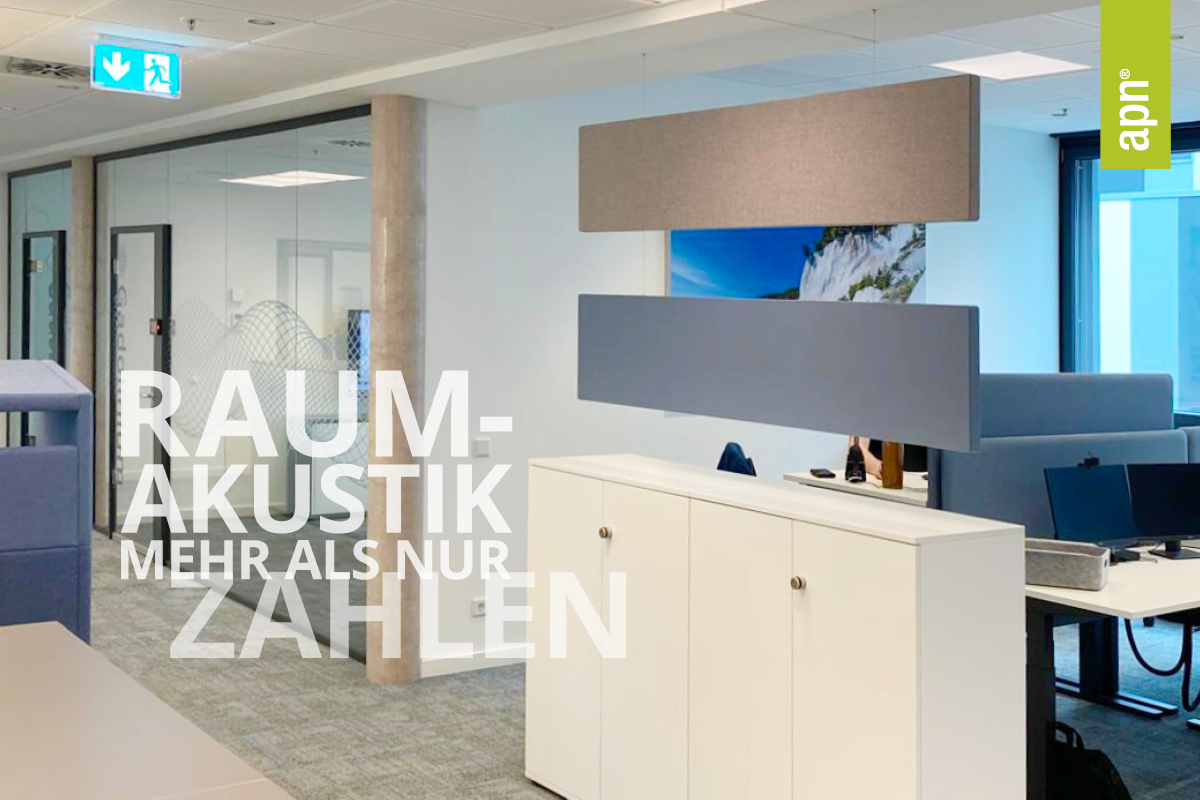Room acoustics – more than just numbers
Open office areas have become an integral part of the design of new working environments. The office stands for exchange, collaboration, integration and identity with the company. Many hard and soft factors are important in the design of such a place. Our specialty, room acoustics, is part of the feel-good factor of a room – a soft factor.
Room acoustics deals with the propagation of sound in rooms and is mainly measured using the reverberation time (1). In addition to the reverberation time, speech propagation and speech intelligibility also play a decisive role. Standards, guidelines and calculation bases help with the planning of optimal acoustic equipment.
Due to the complexity of modern rooms, however, it is not enough to simply rely on mathematical figures when planning room acoustics. Many interrelated factors affect the acoustics of the room and therefore require not just sound-absorbing materials, but specialist know-how:
Despite a sound report from an acoustics engineering firm confirming that the existing room acoustics equipment complied with the recommended reverberation times, the employees were complaining about noise pollution. The company therefore approached us and wanted to make use of our expertise to find a solution.
First, we inspected and analyzed the noise report – with the permission of the engineering firm. As this was flawless in purely mathematical terms, we decided to make an on-site appointment to feel the problem for ourselves. It quickly became clear where the sticking points were. In her acoustic concept, our interior designer focused on covering the reflective surfaces of the walls and increasing the diffusivity (2).
On the day of the installation work, we already received a lot of positive feedback from the employees regarding the improvement in room acoustics. You can see the long-term feedback in the 2nd picture.
We look forward to using our expertise to optimize the room acoustics in other existing areas of this company.
———————————–
(1) Reverberation time: The reverberation time describes the duration of a sound event until it decays in the room. In offices, this time should be significantly less than 1 second.
(2) Diffusivity: Diffusivity describes how the sound is dispersed in a room.
